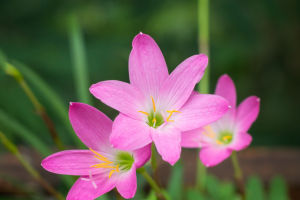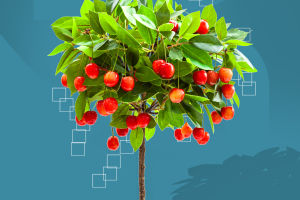Beautiful Cuckooflower
The Cuckooflower (Cardamine pratensis), also known as Lady’s Smock or Mayflower, is a charming wildflower that heralds the arrival of spring.
With its delicate, pale pink or white blossoms, this perennial flower adds a burst of color to meadows, riverbanks, and gardens.
Beyond its visual appeal, the Cuckooflower offers surprising benefits for wildlife and gardeners alike. Let’s dive into the world of this lovely plant and explore what makes it so special!
What is Cuckooflower?
The Cuckooflower is a member of the mustard family, Brassicaceae, and is native to Europe and Asia. It grows in damp, grassy areas and is often found near streams, rivers, and wetlands. The name "Cuckooflower" comes from its habit of blooming around the same time the first cuckoos are heard in spring, signaling the season’s change.
Why Plant Cuckooflower in Your Garden?
1. Attracts Beneficial Insects:
Cuckooflower is a magnet for pollinators like bees, butterflies, and hoverflies. Planting it in your garden can help attract these beneficial insects, which are vital for pollination and maintaining a healthy ecosystem.
2. Supports Wildlife:
This wildflower is particularly important for the Orange-tip butterfly, whose larvae feed exclusively on its leaves. By planting Cuckooflowers, you can create a habitat for these butterflies, supporting biodiversity in your garden.
3. Easy to Grow:
Cuckooflower is low-maintenance and thrives in moist soil, making it perfect for gardens with wetter areas or near water features. It is also self-seeding, which means it will naturally spread and flourish without much effort from the gardener.
4. Adds a Natural Look:
With its delicate flowers and lush green foliage, the Cuckooflower adds a natural, cottage-garden aesthetic to any landscape. It pairs well with other wildflowers like daisies, buttercups, and primroses.
How to Grow Cuckooflower
Growing Cuckooflower is relatively simple, even for beginner gardeners. Here’s how you can do it:
Soil and Location: Cuckooflower thrives in damp, well-drained soil. It prefers full sun to partial shade and is ideal for planting in moist meadows, by streams, or in garden areas that retain moisture.
Planting: Sow Cuckooflower seeds directly into the ground in the autumn or early spring. Scatter the seeds over the soil and lightly cover them with compost or soil.
Watering: Keep the soil consistently moist, especially during dry periods. This plant loves water, so make sure it doesn’t dry out.
Maintenance: Cuckooflower is a low-maintenance plant that requires little care once established. It self-seeds readily, so you can let it spread naturally to create a beautiful wildflower patch.
How to Grow Cuckoo Flower
Video By -Garden Box-
Edible and Medicinal Uses
Surprisingly, the Cuckooflower is also edible! Its leaves and flowers have a peppery flavor, similar to watercress, and can be used in salads or as a garnish. Additionally, in traditional medicine, the plant was believed to have diuretic and anti-inflammatory properties.
Cuckooflower in Folklore and Culture
The Cuckooflower has been celebrated in folklore for centuries.In English folklore, it was believed to be unlucky to bring the flowers indoors, possibly because of its association with the mischievous faeries. The name "Lady's Smock" is thought to refer to the resemblance of the flowers to the smock of the Virgin Mary, making it a symbol of purity.
The Cuckooflower is much more than just a pretty wildflower. It plays a crucial role in supporting wildlife, especially pollinators and butterflies, and can add natural charm to any garden. No matter you’re looking to create a wildlife-friendly garden, add some edible plants, or simply enjoy the beauty of nature, the Cuckooflower is a wonderful choice.So Dear Lykkers, Plant some today, and watch as it brings a touch of springtime magic to your surroundings!


